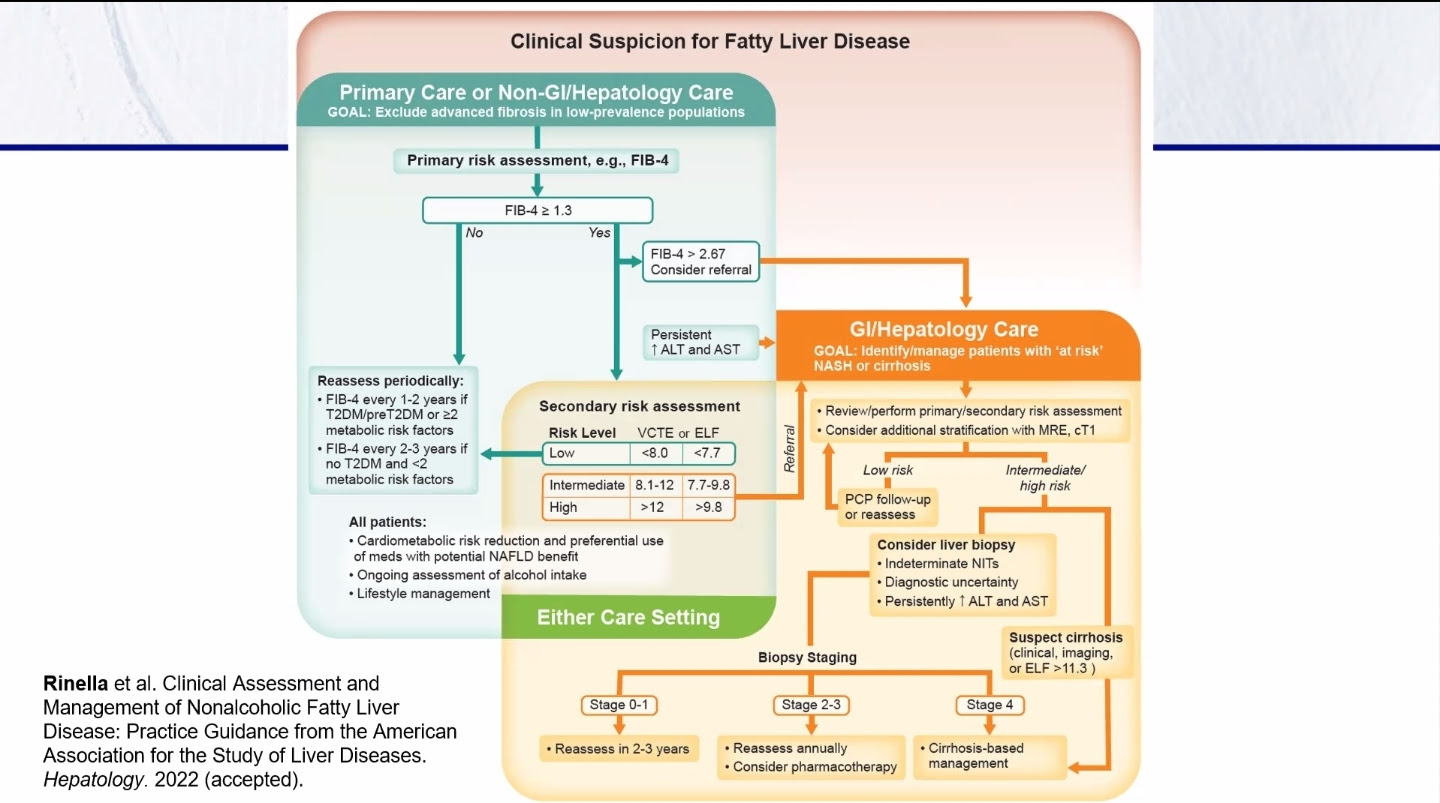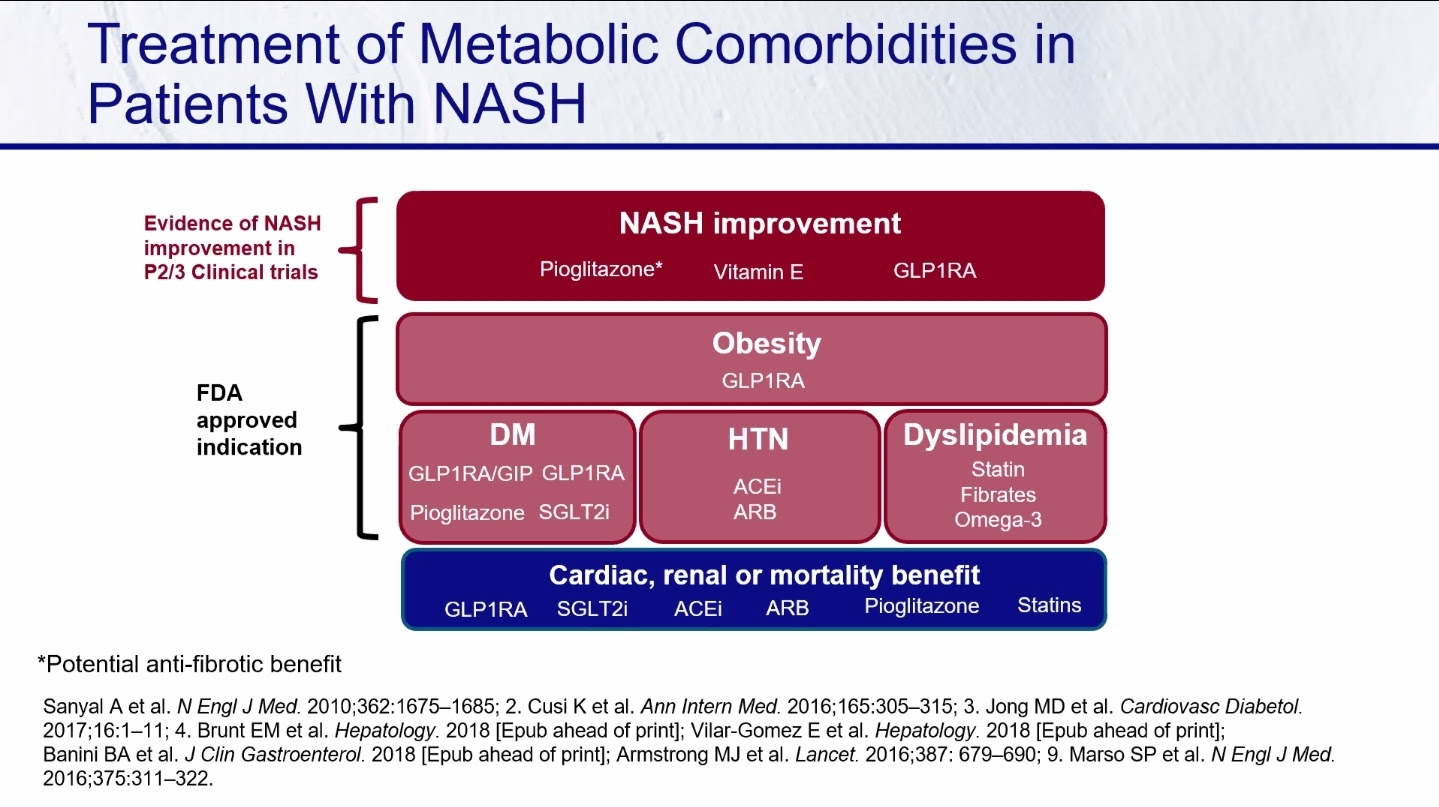When I was a newly diagnosed patient with cirrhosis, one of the things that offended me was that my doctors had followed practice guidelines that said not to screen for asymptomatic disease. I had to be hospitalized before I learned anything about my liver getting sicker for at least a decade. Many of you can relate to that, as you have told your stories in the groups.
It hasn't been officially published yet, but the new guidance by the American Association for the Study of Liver Disease (AASLD) will soon release new practice guidance. Here is a summary slide of the key points.
Click on the chart above if you'd like to see a larger version. Note the second bullet. Screening is approved for high risk patients and that is defined as having any of the conditions that are associated with advancing liver disease. This is an important step forward as it encourages early detection and also makes it harder for insurance companies to deny testing.
The third bullet is important because they are providing primary care with a procedure they can use to determine if a patient should be referred to a specialist. Many of us have been cared for by docs with no useful knowledge of liver disease. This is a step to help make that easier. This looks a little complicated but any doc can follow this flowchart.
Click the image to see a larger view. Just a personal prideful moment here, but this incorporate the FIB4 calculator which we have been advocating for since 2016 and I was repeatedly told it was not a useful indicator.
OK, there are two layers of frosting on this cake. The silo around just treating us organ by organ is breaking down and liver disease and its comorbidities, such as heart disease, are being considered together. An interesting slide shows the drugs currently available for treating our community and considers several of the key other concerns.
Again click the image for a larger view, but if you suffer multiple organ problems you might discuss this chart with your doc. You might notice that omega 3 is approved for use with high triglycerides.
The other frosting is that we expect to have two drugs submitted to FDA for treatment of NASH this year. One of the biggest excuses used to justify not dealing with this disease is that there is no treatment so no value in upsetting people. We know that weight loss is therapy but we'll leave that argument alone for now. We have been hopeful for some kind of relief from medicine and we finally will have two chances for an approved therapy. These drugs are coming from Madrigal and Intercept so join us in wishing them success with FDA.
The next challenge will naturally be with the payers. Even though it is well known that prevention is much cheaper than treating illness, paying for wellness is hard to do. People and organizations are measured on short term budget cycles. No one wants to pay for things whose value won't be realized for a decade or more. The steps I've described above will help move us along toward that battle, but make no mistake, you will hear many speak the gospel of wellness but someone else has to pay for it.









